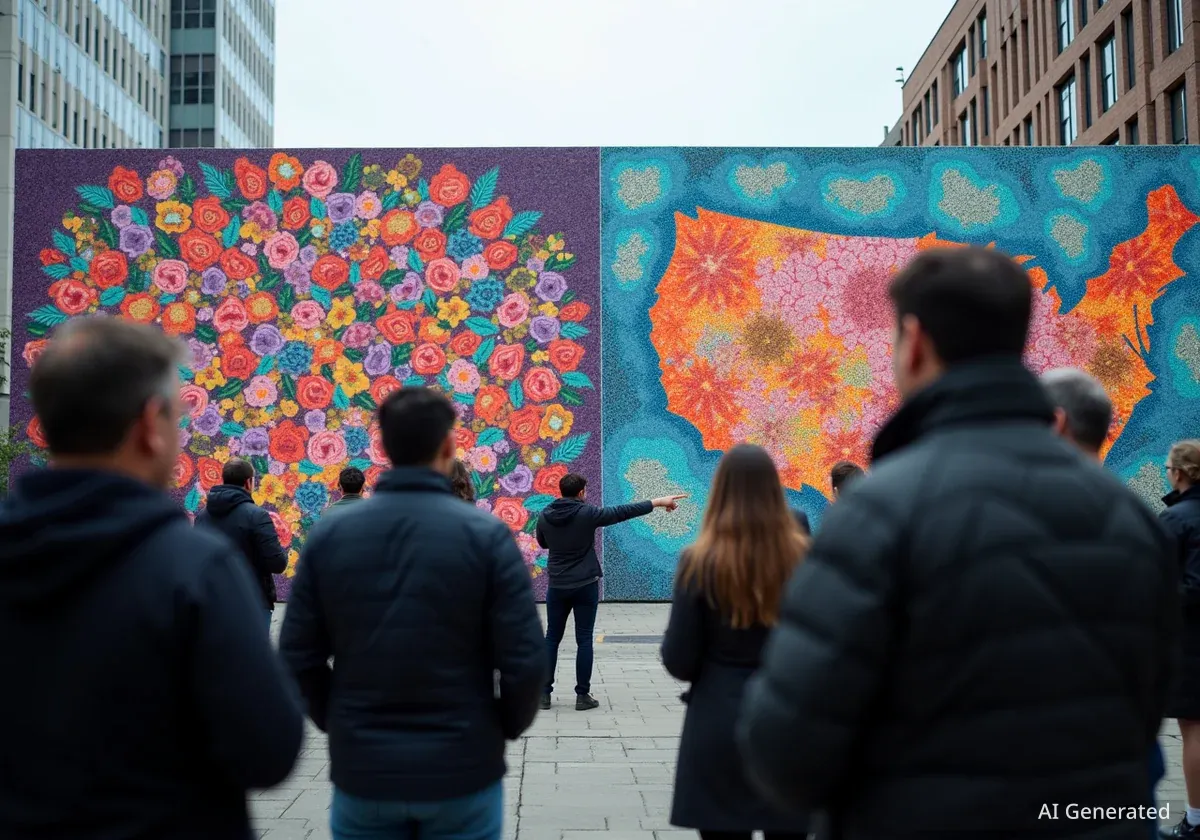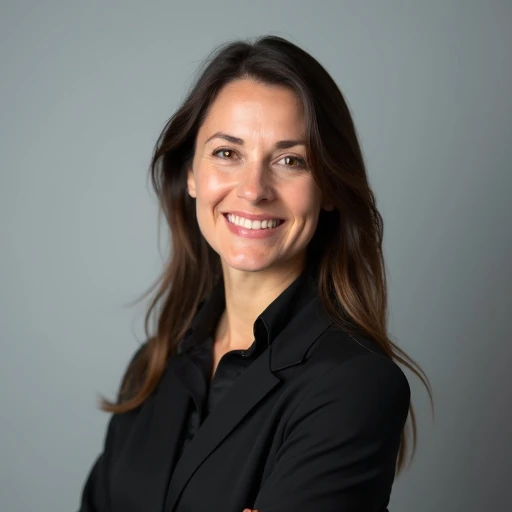A prominent public art space in Chicago, known for showcasing work by local artists for over a decade, is now at the center of a debate over artificial intelligence. The Wintrust Mural Building is currently displaying artwork created with AI, a decision that has triggered significant criticism from community members and artists who argue it displaces human creativity.
The controversy highlights a growing tension between the cost-saving potential of new technologies and the value of traditional artistic methods. While the bank that owns the building defends the choice, local artists are raising concerns about the future of public art projects.
Key Takeaways
- An AI-generated mural displayed on Chicago's Wintrust Mural Building has caused public and artistic backlash.
- The artwork was commissioned by the nonprofit Hope Ignites Chicago, which used AI for cost efficiency.
- Wintrust Bank, which donates the space, has stated it will not ban AI-generated art in the future.
- Local artists argue the use of AI undermines the program's goal of supporting community and human creativity.
- The next mural scheduled for the building will be a human-created piece by artist Cristian Roldán Aponte.
A Community Art Project Faces a Modern Controversy
For more than 10 years, the Wintrust Mural Building, located along the highly trafficked Kennedy Expressway, has served as a canvas for Chicago's nonprofit sector. The bank donates the prominent space, allowing organizations to commission murals that highlight their community-focused missions. This program has featured over 50 organizations since its inception in 2014.
However, the most recent installation has broken from tradition. The mural, intended to promote the nonprofit Hope Ignites Chicago, was created using artificial intelligence. This move has led to a wave of negative reactions on social media platforms like Instagram and Reddit, where users have criticized the artwork as "AI slop" and expressed concern over technology taking jobs from artists.
How the Mural Program Works
Unlike traditional murals painted directly onto walls, the art on the Wintrust building is printed on large vinyl mesh sheets. This method allows for the artwork to be rotated frequently, giving numerous organizations an opportunity to be featured. Wintrust provides the space, but the selected nonprofit is responsible for commissioning and creating the artwork itself.
The Bank's Position on AI-Generated Art
In response to the criticism, Wintrust clarified its role in the process. A spokesperson explained that the bank does not select the artists or dictate the creative process. That responsibility lies with the featured nonprofit partner.
Amy Yuhn, a Wintrust spokesperson, issued a statement confirming the bank has no plans to prohibit the use of AI in future projects. "The non-profit partner being featured on the Mural Building is responsible for creating the artwork displayed, and they are free to go about that in the best way for them," Yuhn wrote.
"In some cases, as with the current mural, that means using computer-generated imagery for cost efficiency. To us, the means of production doesn’t diminish the importance of the story and the work they do."
The nonprofit at the center of the controversy, Hope Ignites Chicago, has not publicly responded to the criticism. The organization's mission is to support young people in their pursuit of higher education and careers.
Artists Weigh In on Technology and Creativity
The use of AI on such a public platform has ignited a conversation among Chicago's artists. Many feel it contradicts the spirit of a community art initiative designed to connect with local talent.
A Machine Lacks a Soul
Cristian Roldán Aponte, the artist hired to create the next mural for the building, believes technology cannot replicate human experience. "People see AI as part of a way to cut costs, but a machine can never substitute for an artist," he stated. His upcoming work for the Community Investment Corporation (CIC) is being created without AI.
"Murals are storytelling," Roldán Aponte explained. "What authentic and unique story can a machine tell you? It doesn’t have a soul. It didn’t make mistakes that are part of the flavor of their humanity."
An Ethical Commission Process
The process for Cristian Roldán Aponte's upcoming mural was highlighted as a model for ethical artist engagement. The Community Investment Corporation paid five finalists $1,000 each to develop their proposals. As the winner, Roldán Aponte will receive a $9,000 artist fee for his work.
AI as a Tool, Not a Replacement
Damon Lamar Reed, a veteran artist who previously designed a mural for the Red Cross on the same building, said he immediately recognized the current work as AI-generated because it had a "generic feel."
Reed is not entirely opposed to the technology but sees a clear distinction in its application. "I’m not against using AI as a tool," he said. "I use it sometimes if I’m trying to find a reference photo... Then I can draw or paint that. I flip it, so I’m still creating something original."
He compared the current situation to the early days of music streaming, when the industry had to establish rules to navigate new technology. "AI is part of the mural world, so we gotta figure out how to navigate it," Reed concluded.
The Future of Public Art in an Automated Age
The debate over the Wintrust mural reflects a larger, global conversation about the role of artificial intelligence in creative fields. While AI offers potential benefits in efficiency and cost, this instance shows the strong public and professional value placed on human-made art, especially in community settings.
As organizations and artists navigate this new landscape, the central question remains: how to balance technological innovation with the preservation of human creativity and professional opportunity.
For now, the next chapter for the Wintrust Mural Building will be a return to traditional methods. Roldán Aponte's human-designed mural celebrating the Community Investment Corporation is expected to be installed in the coming weeks, replacing the controversial AI-generated images.





